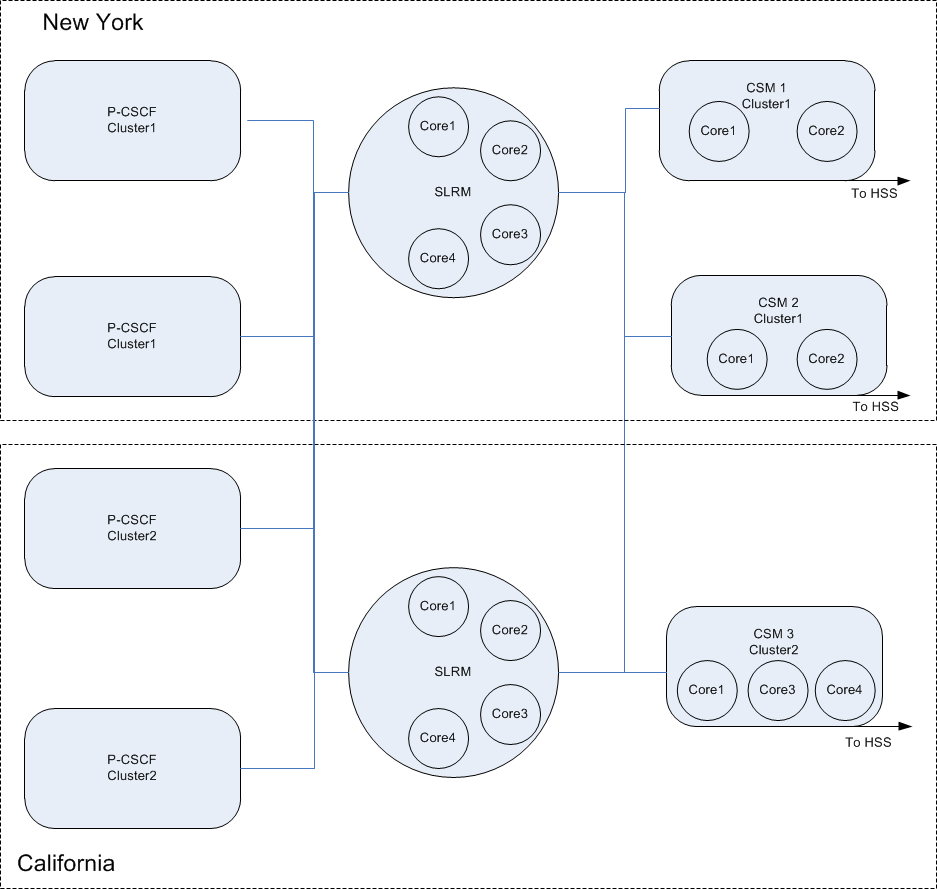Cluster Configuration
As stated, core configurations ensure that the SLRM does not send traffic to an Oracle Communications Core Session Manager that does not service that core's domain(s). Cluster configuration can refine these constraints by establishing a group of Oracle Communications Core Session Managers for which core re-balancing is preferred. The SLRM attempts to load balance Oracle Communications Core Session Managers that belong to the same cluster first. If all Oracle Communications Core Session Managers in that cluster are unavailable, the SLRM can choose an Oracle Communications Core Session Manager that services the correct core, but belongs to a different cluster.
Each participating Oracle Communications Core Session Manager must belong to at least one cluster to participate in load balancing processes. To accommodate this requirement, all Oracle Communications Core Session Managers belong to the null cluster by default. (Cluster configuration is a string, which is empty by default.) In addition, the SLRM adds any P-CSCF without a cluster configuration to the null cluster.
As deployments grow, however, the operator may need to balance the requirements of maintaining connectivity during outages with the value of keeping core traffic regionally focused. The configuration of multiple clusters logically separates groups of Oracle Communications Core Session Managers. The operator can configure these cluster to establish "affinity" between P-CSCFs and Oracle Communications Core Session Managers that reside, for example, in the same geographic region.
Noting the diagram below, a REGISTER coming from a P-CSCF in New York could be sent to a Oracle Communications Core Session Manager that services Core1. All things equal, SLRM can choose CSM 1, CSM 2 or CSM 3. Cluster configuration, however, can defer the selection of CSM 3, thereby preventing the traffic from traversing the long span to California. Furthermore, if both CSM 1 and CSM 2 become unavailable, SLRM has the option of forwarding to CSM 3 because it supports Core1.
